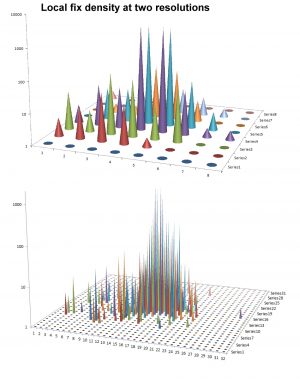The Parallel Processing Concept – Part II

In my book I devote several chapters to explain, illustrate, simulate and mathematically formulate the parallel processing (PP) principle. PP represents the foundation of the extended statistical-mechanical framework that I propose as necessary to model complex space use more realistically. In this Part II of the PP description I elaborate further on this unfamiliar approach, which represents an alternative to the standard “Markov process” (mechanistic) methods in movement ecological theory. Hopefully the reader of my book and these supplementary blog posts will manage the difficult task to be both critical and open-minded. After all, I have formulated several testable hypotheses, where the null hypothesis is the standard framework and the alternative hypothesis is the PP-compliant process. Several pilot tests on real animal space use are presented in my book and in our papers, lending support to a PP kind of space use; spatio-temporal memory utilization in combination with a multi-s...
